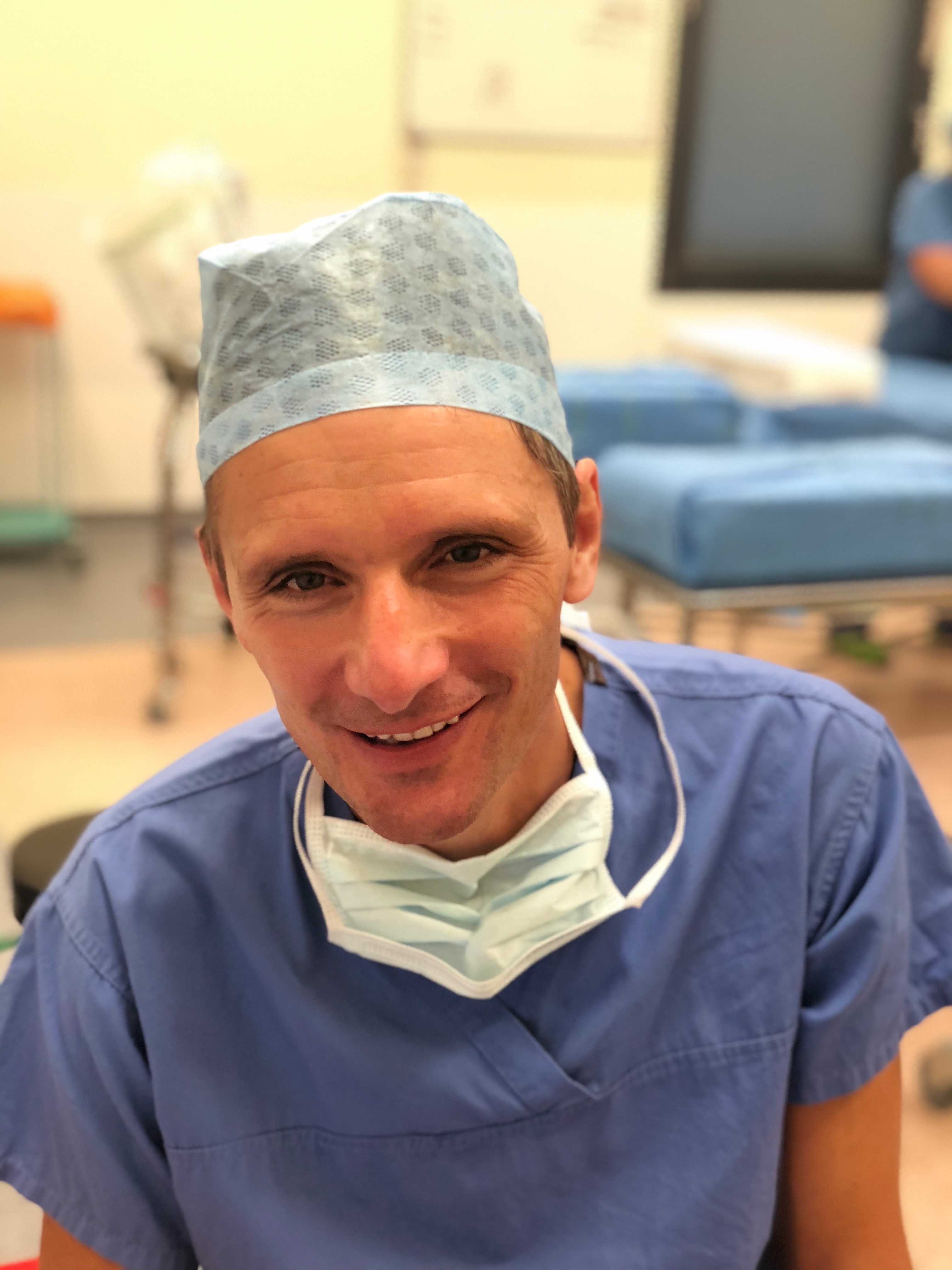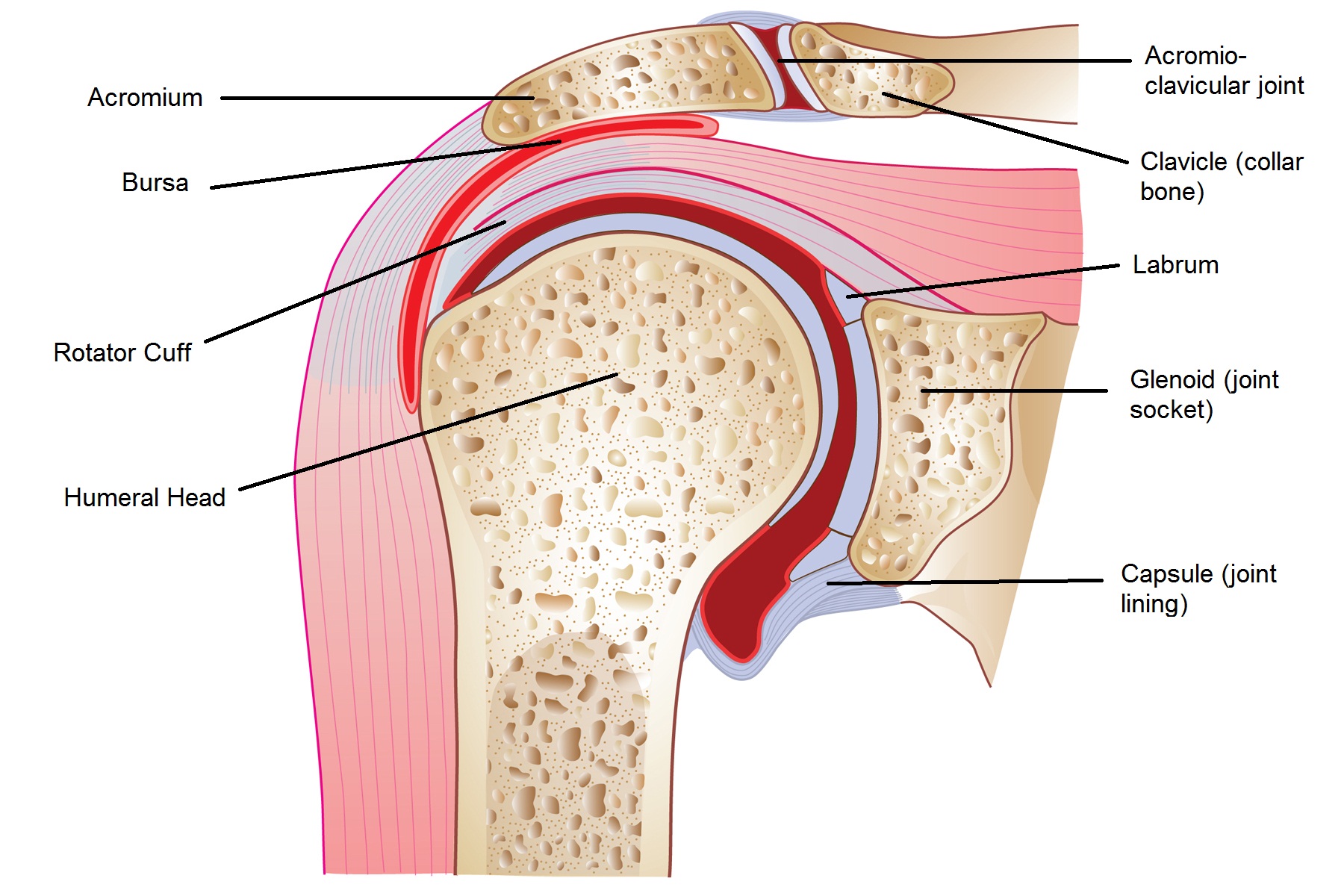The Shoulder
The shoulder is made up of three main bones: the upper arm bone (humerus), the shoulder blade (scapula), and the collarbone (clavicle). The shoulder is a ball-and-socket joint with the ball being the head of the humerus and the socket being the glenoid. The acromioclavicular joint (ACJ) is formed by the tip of the scapula (the acromion) and the clavicle.
The arm is kept in the shoulder socket by the muscles of the rotator cuff. These muscles combine to form a covering around the head of the humerus to help lift and rotate the arm.
Between the rotator cuff and the the acromion is a lubricating sac called a bursa. The bursa allows the rotator cuff muscles to glide freely when the arm is moved.
A soft fibrous tissue rim called the labrum surrounds the glenoid to help stabilise the shoulder due to the head of the humerus being much larger than the glenoid socket. This rim deepens the socket by up to 50% and serves as an attachment site for several ligaments.

